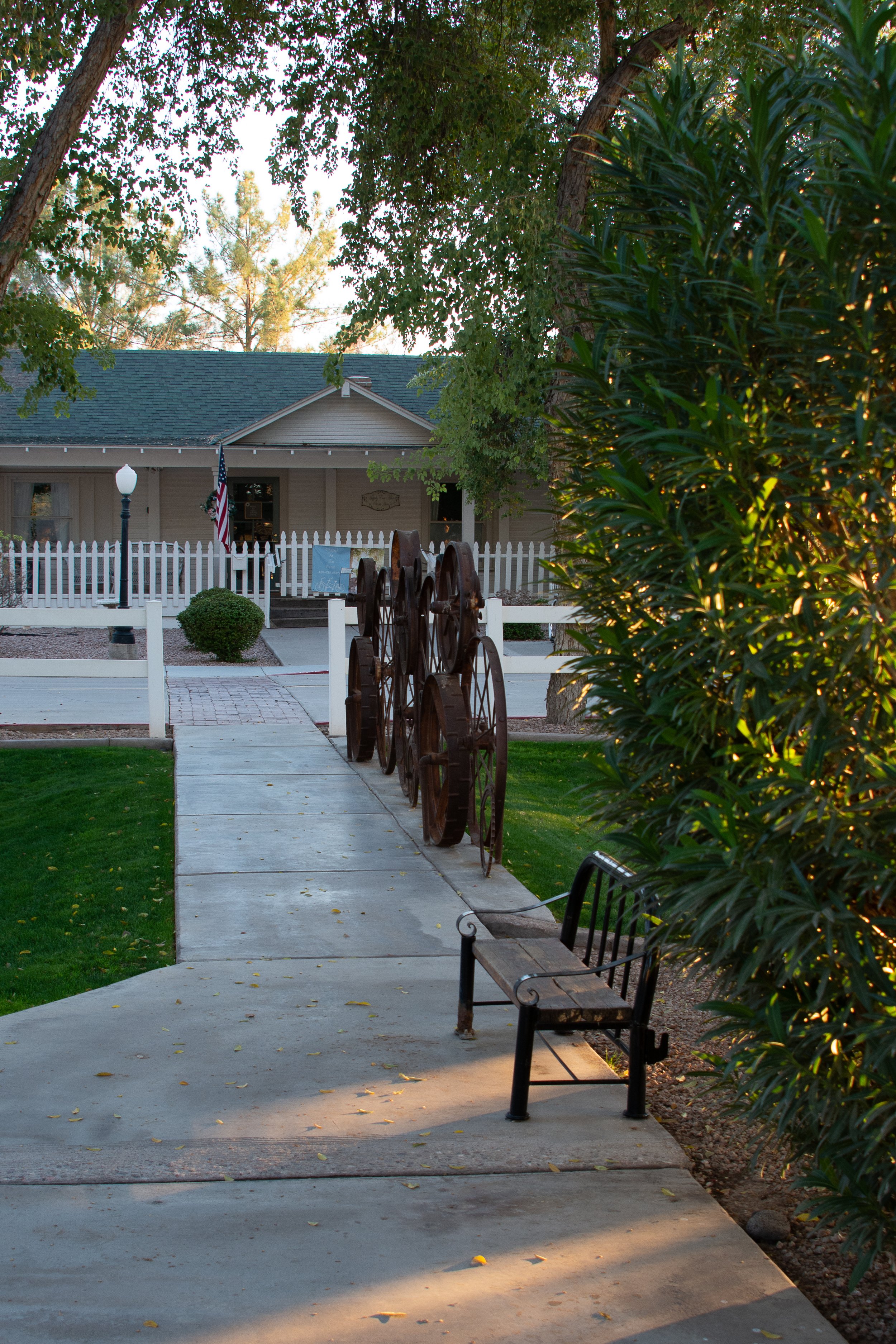The Farmhouse Village started as a desire for a growing community to remember its small-town roots.
When Gilbert grew from 5,700 to nearly 30,000 residents between 1980 and 1990, Ruth Gieszl had a vision to keep the history of Gilbert around.
She and her husband, Hugh, were proud farmers of the Gilbert area and always desired to preserve the town’s history and demonstrate the life of Gilbert families in this area.
Ruth’s vision came to life in 1998 when the Farmhouse Village was born. She moved four 1920s- and 1930s-era houses to a 2.7-acre plot of land, originally part of the Gieszl Farm, that already housed two historic buildings. Restored by Ruth’s son-in-law, the homes were preserved to represent their original state.
The six buildings, now some of the oldest in Gilbert, tell a story along with the pavilion and decor. One house was once the home of Hubert Harmon, Gilbert’s first town marshal. The pavilion is an old bus barn from Arizona State University. The antique tractor and a metal flower art - made up of a fan blade and other tractor parts - are reminders of Gilbert’s agricultural legacy and the tillage of this land. Mark Twain’s statue, Ruth’s favorite spot, honors small town village life.
Today, the six shops are operated by small family businesses and have a time onsite range from a recent opening to 20+ years in the same shop. The Farmhouse Village strives to demonstrate the importance of the role of family and good works.
For some, the Farmhouse Village is an outdoor museum to appreciate the early life of Gilbert and small-town upbringings; for others, it’s a place to relax, watch their kids run around, and enjoy a bite to eat or a bit of shopping.
We hope you enjoy your visit to The Farmhouse Village in Gilbert.


